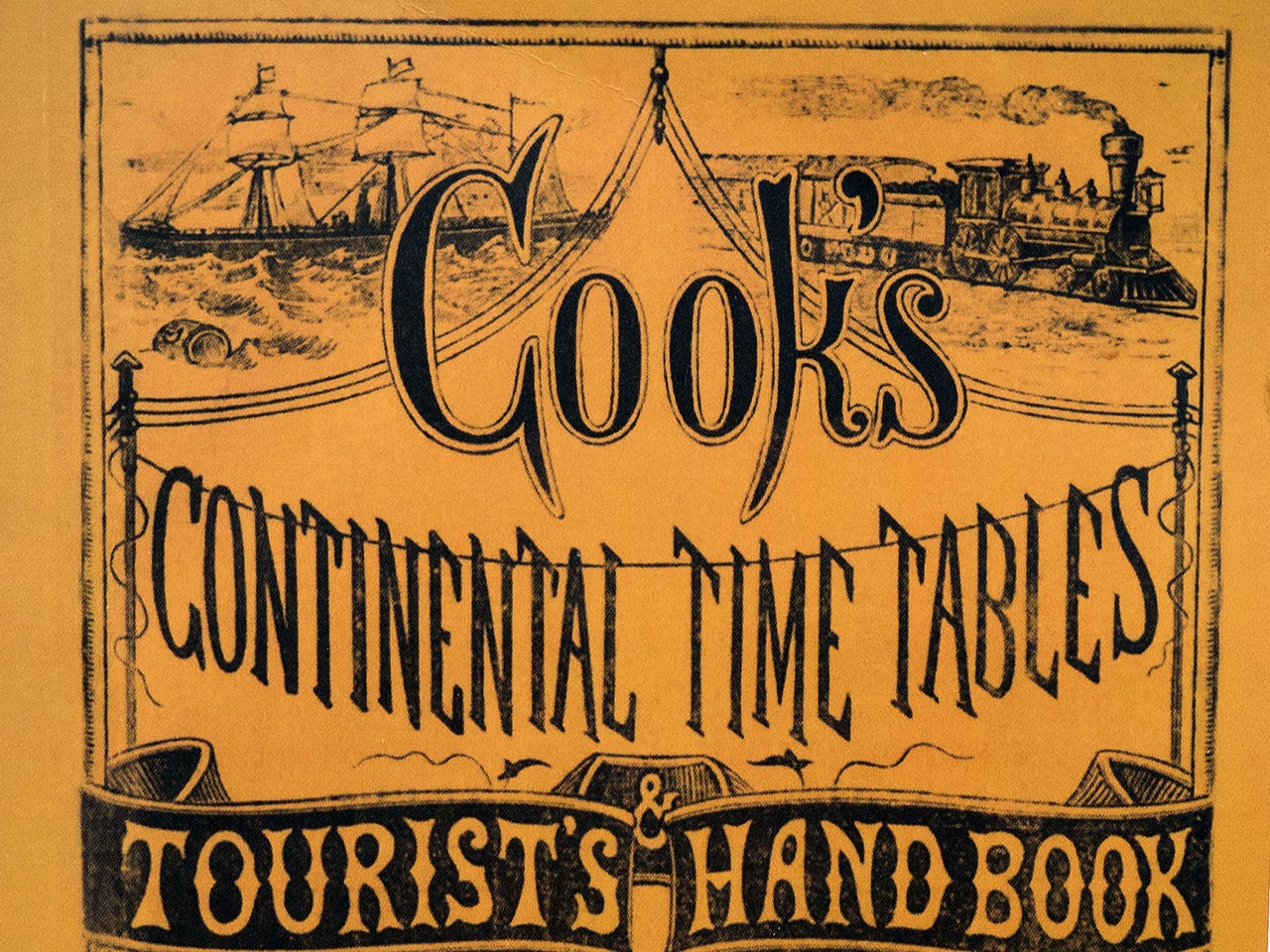Invitation to adventure: 150 years of the European rail timetable
The first ‘masterpiece of compression’ – compiling all the key Continental railways in a single volume – was created in March 1873

Your support helps us to tell the story
From reproductive rights to climate change to Big Tech, The Independent is on the ground when the story is developing. Whether it's investigating the financials of Elon Musk's pro-Trump PAC or producing our latest documentary, 'The A Word', which shines a light on the American women fighting for reproductive rights, we know how important it is to parse out the facts from the messaging.
At such a critical moment in US history, we need reporters on the ground. Your donation allows us to keep sending journalists to speak to both sides of the story.
The Independent is trusted by Americans across the entire political spectrum. And unlike many other quality news outlets, we choose not to lock Americans out of our reporting and analysis with paywalls. We believe quality journalism should be available to everyone, paid for by those who can afford it.
Your support makes all the difference.For a book that was to make history, the slim first edition of Cook’s Continental Time Tables looks entirely inconsequential. It can easily be slipped into a jacket pocket. The year is 1873, and the book is the pilot issue of the volume which today is still published as the European Rail Timetable.
The 1870s represented a golden age of European travel. International tourism was booming: a growing middle class could, for the first time, afford journeys to see regions that their parents would never have dreamed of visiting. In England, in particular, there was a huge appetite for visiting accessible regions of the near-Continent, notably the Low Countries, the Rhineland and the western Alps.
Few of these travellers from England could afford berths on the first Wagons-Lits sleeping cars which, in 1873, made their debut on routes from the Belgian port of Ostend to Germany. Instead the new adventurers, ever conscious of keeping to a budget, travelled by day trains, usually in second class. They stayed in modest hotels, paying with special coupons supplied by Thomas Cook – the man who industrialised and democratised international travel.

The preacher-turned-entrepreneur provided for the tourist’s every need. Prepaid hotel coupons were an ingenious invention permitting travellers to know prices in advance and avoided having to fiddle with foreign currency. There was also the security of having a hotel explicitly commended by the omniscient Cook.
For some, there was the chance of a tour personally escorted by the man himself, and this gave nervous travellers or first-timers the chance to venture abroad with greater confidence. Cook’s tours became especially popular with single women. But there were also great cohorts of travellers who were happy to go-it-alone with the help of Cook’s prepaid coupons – and, from March 1873, his invaluable timetable.
The choices of routes preferred by those early travellers did not greatly vary. They stuck to Cook’s recommendations, favouring hotels where they would inevitably meet other English guests.
The first issue of Cook’s Continental is an insight into another world, one where readers are reassured that several English newspapers are available at the Old Bible Hotel in Amsterdam and that an Anglican chaplain is on hand for Sunday morning services at the Hotel Steinbock in Coire (now better known as the Swiss town of Chur).
Who, these days, could imagine a time when, as the debut edition assured us, “no passports are required by British subjects travelling via Harwich to Holland, Belgium, Germany and Switzerland”?
The European Rail Timetable is still more than a litany of the hours recording the anticipated movements of trains. It is a gold-plated invitation to myriad flights of fancy
Compiling such a document in the Victorian era was profoundly difficult. Cook implored readers to help by tackling inaccuracies they encountered, asking that “all Gentlemen so interested forward any corrections they may wish as early as possible”.
We discern that while Ladies were certainly encouraged to join a Thomas Cook tour, the business of timetables was definitely lads’ stuff.
Cook’s Continental Time Tables became the Thomas Cook European Rail Timetable. A decade ago the compilers celebrated the 140th anniversary with a special edition – but that summer the troubled holiday giant decided to end publication.
Fortunately the invaluable book was saved by John Potter and Chris Woodcock, and indeed has outlived the company Thomas Cook founded – which collapsed in 2019.
The European Rail Timetable team includes a female compiler, and our companion book, Europe by Rail: The Definitive Guide, is the work of two women. Print editions appear quarterly, with the other eight issues each year being purely digital products.
In this age of online journey planners, the appeal of a printed timetable has not dwindled. A century and a half after Thomas Cook’s debut edition (price 1s, now 5p), the European Rail Timetable is still more than a litany of the hours recording the anticipated movements of trains. It is a gold-plated invitation to myriad flights of fancy.
One can plot a route through Bosnia on local trains, reflect on what it might be like to take the ship from Cadiz to the Canary Islands, and check the times of the Sunrise Izumo from Izumoshi to Tokyo. Just like Cook’s March 1873 pilot issue of the timetable, the March 2023 edition is a book that, although lacking a definite plot, is still rich in possibility. I may need to go to Barnsley, but could I not, were I so minded, go also to Basel or Berlin?
There is, we think, certainly a place for tabular renderings of timings for each rail route, allowing the reader to not just see departure and arrival times, but also the pattern of train services with intermediate stops, and revealing how that pattern varies during the day. Cook’s Continental has done that perfectly for 150 years. It is a masterpiece of compression, and still we think a volume which warrants a place in the traveller’s arsenal.
Nicky Gardner and Susanne Kries are authors of ‘Europe by Rail: The Definitive Guide’ and editors of ‘Hidden Europe’ magazine. The ‘European Rail Timetable’ for March 2023 is on sale now, price £24.99.
Join our commenting forum
Join thought-provoking conversations, follow other Independent readers and see their replies
Comments